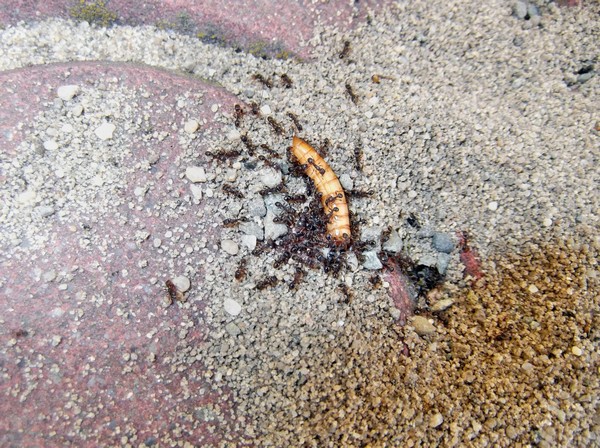Sod Ant - Hard Worker and Collective Player
One of the largest genera of the bellied-bellied Tetramorium brought together about 500 species of earth ants. Insects are found on almost all continents - in Europe, Asia, Australia, Africa and America. They are brown in color, the size of the working individuals does not exceed 4 mm. In the north of Eurasia, the genus is represented by a mass species - a turf ant (Tetramorium caespitum). Insects settle in open, heated areas. They are characterized by monogamy - there is only one queen in the nest.

View description
The sod ant (Tetramorium caespitum) is one of the species of the genus Tetramorium of the suborder of the cauliflower. Small insects, length of working individuals 2-4 mm, females and males twice as large, up to 7 mm. The color is brown, reddish-brown, sometimes black. Initially, naturalist Karl Linney, who described insects in 1758, mistakenly assigned them to the genus Formica. After 100 years, the Austrian scientist Gustav Mayr attributed the turf ant to the genus Tetramorium.
Distinctive characteristics of the species:
- Collective behavior - the family has well-developed social ties, ants quickly mobilize to carry food, protect or expand the nest. Foragers use pheromone tracks to guide assistants to the location of the feed. This is the only type of temperate zone, with collective hunting and protection of the territory.
- High abundance - one colony totals up to 50 thousand individuals.
- Omnivore - insects are active entomophages, collect seeds, eat corpses.
In working individuals, the length of the head is slightly larger than the width. Antennae 12-segmented, stinging triangular. Eyes are small, eyes are absent. Chest and abdomen short. The head of the female is slightly narrowed in front. The sides of the clypeus rise at the attachment point of the antennae. The eyes are large, bulging. The stalk between the chest and the abdomen consists of two segments. The head and chest are matte, the scutellum and the oval belly are shiny. Antennae, stings and tarsi pale brown.

The males have a round head, eyes are bulging. The mandibles are extended to the apex, have one tooth. The antennae are filiform, composed of 10 segments. The whole body is brilliant. There are wings.
Distribution area
The species lives on a vast territory, including all of Europe, Western, Central and Central Asia, and North Africa. In Russia it is found in the European part. Siberia, in the Caucasus. Together with the soil, representatives of Tetramorium caespitum were brought to the USA and Canada, where they settled in 23 states.
Lifestyle
Sod ants build nests in the ground, choosing open areas, lawns. At the entrance to the nest, a mound of discarded soil is formed. The family is formed by one female. Sometimes a colony takes a second uterus, but together they live. Some ants with the new queen leave the old nest and go in search of a suitable place for living. This is the division of the colony. Insects arrange diffuse nests, populate the finished cavity in the soil or buildings.

Information. Sod ant sometimes settles in a person’s home. Insects choose foundation slots, voids in the walls, under the floor.
Anthills for a large family have several sections and entrances. In the nest there are chambers for brood, stocks of seeds. Insects carry out joint transportation of large prey found by forager scouts.Collecting carrots benefits the environment. No less significant is the role of ants in soil formation. They mix soil layers, improve air exchange.

The years of winged adults occurs in July-August. Fertilized females lay their eggs underground, forming a new colony. The first workers of the queen are fed on their own.
Captivity
Lovers of formicaria (ant farms) often contain the species Tetramorium caespitum. Insects are active, multiply rapidly, and do not hibernate. They are not picky in food, eat small insects, boiled meat, yolk, cereal seeds, fruit juice, honey. You can alternate carbohydrate and protein foods. Sod ant easily adapts to new conditions, easy to care for. Recommended temperature for formicaria is 21-24 °.
Social parasitism
Next to the turf ant, small degenerated ants Anergates atratulus and Teleutomyrmex live in its nest. These species lost the caste of workers. They cannot build their own homes and get food. Among small insects with a body length of 2 mm, only males and females remained. Both socially parasitic species are listed in the Red Book of the WSOP. Strongylognathus genus ants are similar in appearance to Tetramorium caespitum. They kidnap pupae of sod ant, which subsequently become slaves in a strange nest.



 (votes: 3, average rating: 3,67 out of 5)
(votes: 3, average rating: 3,67 out of 5)